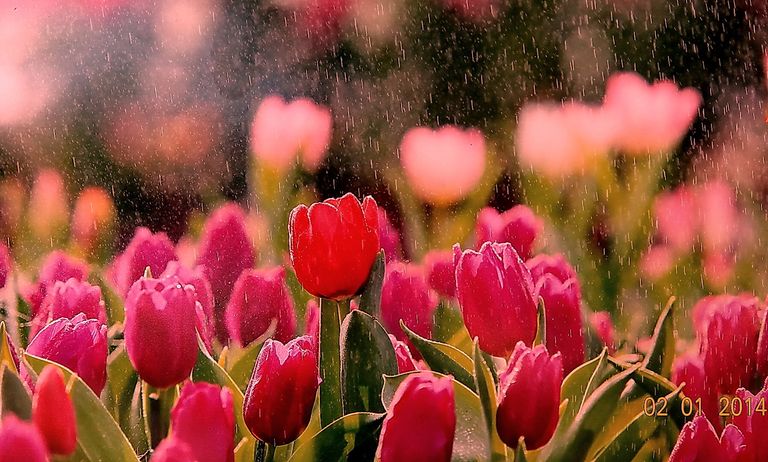Colors are more than just visual elements in our environment; they are powerful forces that shape our emotions, behaviors, and even decision-making processes. From the calming blues of a serene ocean to the energizing reds of a vibrant sunset, colors have a profound impact on how we feel and react to the world around us. Their ability to inspire, motivate, and influence has been studied extensively, revealing their importance in art, psychology, and everyday life.
The Psychological Impact of Colors
Colors have a direct connection to human psychology, often triggering specific emotional responses.
Warm Colors: Red, orange, and yellow are considered warm colors and are often associated with energy, passion, and excitement. For example, red can evoke feelings of love or urgency, while yellow often conveys happiness and optimism.
Cool Colors: Blue, green, and purple are classified as cool colors and tend to create a sense of calm, trust, and introspection. Blue, for instance, is known for its calming effects and is often used in settings where relaxation is essential, such as bedrooms or spas.
Neutral Colors: Shades like white, black, and gray offer balance and are often used to convey sophistication, simplicity, or neutrality.
How Colors Inspire Humans
Colors play a significant role in sparking creativity, fostering productivity, and uplifting moods.
Art and Creativity: Artists and designers use color palettes to evoke specific emotions and convey messages. Bright and bold colors often inspire creativity, while softer tones can encourage introspection and contemplation.
Productivity: Workspaces often incorporate specific colors to enhance focus and efficiency. Blue is believed to improve productivity, while green can reduce stress in high-pressure environments.
Cultural and Spiritual Significance: Colors have deep symbolic meanings in many cultures. For instance, white represents purity in some societies, while red symbolizes good fortune in others. Such associations inspire individuals in their traditions and spiritual practices.
Colors and Human Reactions
Colors can also influence human behavior and decision-making in subtle but impactful ways.
Marketing and Advertising: Brands carefully select colors to evoke desired consumer reactions. Fast-food chains often use red and yellow because these colors are thought to stimulate appetite and encourage quick decision-making.
Social Interactions: The colors people choose to wear can influence how others perceive them. A black outfit may convey authority and sophistication, while a pink outfit may suggest warmth and approachability.
Environmental Reactions: Colors in a physical environment can impact how people feel in a space. For example, green spaces filled with natural hues can make people feel rejuvenated, while brightly colored amusement parks evoke excitement and fun.
The Science Behind Color Perception
The way humans perceive color is rooted in biology and neurology.
Light and Vision: Colors are perceived when light hits objects and reflects into the eye. The brain processes these reflections, translating them into the vibrant spectrum we see.
Cultural Contexts: While biology plays a role, cultural upbringing also affects how people interpret colors. For example, white signifies mourning in some cultures, while in others, it represents purity and celebration.
Personal Associations: Personal experiences shape how individuals react to colors. Someone with fond memories of sunny days may find yellow uplifting, while another person might associate it with stress.

Harnessing the Power of Colors in Daily Life
Understanding how colors affect emotions and actions allows individuals to use them intentionally in their daily lives.
Home Design: Choosing calming colors like pastel blues and greens for bedrooms can promote better sleep, while vibrant hues in living spaces can energize and foster social interaction.
Fashion: Wearing certain colors can affect confidence and how one is perceived. A red dress might exude power and passion, while neutral tones might project professionalism.
Health and Wellness: Incorporating color therapy, where exposure to specific colors is used to promote healing and relaxation, can improve mental well-being.

Conclusion
Colors are an integral part of the human experience, influencing thoughts, emotions, and actions in ways that often go unnoticed. They inspire creativity, foster emotional connections, and guide behaviors across cultures and contexts. By understanding the power of colors, individuals can harness their potential to create more meaningful, productive, and enriching experiences in their personal and professional lives. Whether through the warm embrace of red, the calming touch of blue, or the energizing spark of yellow, colors remain a constant source of inspiration and influence in the tapestry of human existence.



























Looks like it's time to add some blue to my workspace to increase productivity! You did a lot of research on colors, I learned a lot today! Thanks! These are all pretty pictures too, happy holidays @hangin. ;)
Thank you @jadeaca happy that it helped you and good luck with your business.